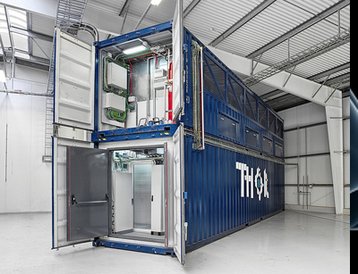IBM released a new predictive analytics tool based on IP from 21 of its inventions that takes measuring and modelling one step further, allowing CIOs to see how trends could take place in the data center in years to come today.
From removing a server in the data center to predicting how operational needs might change given future business demands, the analytical capabilities, available across IBM Global Services, will use information from areas such as cash flow analysis, physical threshold capacity and resiliency rationalization to help with data center planning and management.
While these three key areas have been released so far, IBM service product line leader for site and facility service Chris Scott said 21 such solutions will be available to customers in future.
“It is the first time IBM has used analysis to provide sustainable solutions of our design. It is essentially a blue print for a smarter data center,” Scott said at the products launch today in London.
Scott said figures from Gartner show that as many as three quarter of data centers that exist today are unsustainable for high-density IT deployment.
Such predictive analysis, according to Scott, will allow these data centers to be more flexible in future.
“IT technology changes far more quickly than data centers can keep up, so you need to design flexibility into the data center. One example of this is how floor-based services moved to the rack, then to blades. The data center had to change – if we can build flexibility into the data center than it will be better able to change,” Scott said.
IBM’s cash flow analysis tool is designed to help provide insight to alternatives for the infrastructure operations, and help data center operators decide wether to consolidate or upgrade, build out or whether to look at long-term or short term growth, for example.
The Physical Threshold Capacity Analysis tool can help forecast data center capacity requirements using a patent-pending algorithm which helps show how unpredictable demand could affect the data center, based on a client’s input or its expected application growth and IT strategy and current capabilities inside the data center.
Resiliency Rationalization Analysis, according to IBM, goes beyond capital cost, instead looking at the full value of availability to a business’ operations.
The solutions is already being used by AST Modular (AST also announced new branding today to the longer name) in its containerized cooling solutions.
AST Modular’s Natural FreeCooling was designed in Q1 2009, with a patent filed in March 2010, after which it was installed in the Thor Data Center in Iceland, as well as two data center (one bank with IBM) in Denmark and one in Sydney, with IBM for a major 3D animation company.
The AST Modular free cooling solutions places allows for hot and cold aisle cooling using moveable racks inside containerized data center such as IBM’s Portable Modular Data Center (PMDC).
It uses evaporative and air-air cooling and automated fans to change incoming airflow as required. Situated the cooling solution in a separate box on top of the data center means the racks are not exposed to external environmental hazards.
AST Modular, whcih has partnered with IBM, ABB and Stulz for the containerized solution, said its solution increases the serviceability level of the containerized data center with moveable racks allowing access as well as the creation of hot and cold aisles. For more on this, see tomorrow’s news on DatacenterDynamics.

